Initially, I had no plans to buy Pentax 67 135mm F4 Macro lens but could not resist the temptation when I saw it at a bargain price in a very good condition at a used camera gear online marketplace. I actually looked for a 165mm F2.8 lens, which could be a good supplement to my 90mm F2.8, but decided to first try Pentax 67 135mm F4 Macro.
Unfortunately, and, oddly enough, very few technical details can be found about this lens, except for the well-known facts which you can read on the relevant page of PentaxForums.com. Nevertheless, some information regarding its optical implementation can be traced.
It is an implementation of Voigtländer semi-symmetrical Dynar lens formula — modification of Heliar lens which is also a variant of the Cooke triplet design. The Pentax lens is very close to the F3.5 Dynar that was previously renamed Heliar. The Dynar is an ancestor to all modern Heliars.
Close focusing and macro capabilities
Actually, this isn’t a macro lens. It’s developed specifically for close focusing. At the maximum lens extension of 42mm it gives only 0.31× magnification ratio with an exposure factor of about ×1.72.
To achieve 1× magnification the lens should be extended by additional 93mm with full set of extension tubes #1+2+3.
As a result, you get a very long lens with exposure factor ×4 which is equal to the actual lens speed F8. This results in the focusing screen becoming very dark and makes the actual focusing very difficult.
Field of view
The focal length of a Pentax 67 135mm F4 Macro lens with the field of view 36.5° is close to that of the old 150mm F2.8 lens with a field of view 33°. Well, I like to use it for close portraits, as for such an image scale there is no need for extension tubes.
Size and weight
It is a portable, lightweight and very handy lens despite its size comparable to 165mm F2.8 lens but 200g lighter.
Hood
The lens has a deeply recessed front element, so it doesn’t actually need a hood. But in certain situations it still may be required. Original clip-on plastic hood PH-SA 67mm costs around $50. A cheap compact metal round hood for $3 can be a good substitute.
Filters
It has a 67mm filter thread which works fine with both screw-in and special bayonet mount filters.
Aperture
The lens has 8 aperture blades, which is typical for most of the Pentax 67 lenses. I rarely stop it down below F16, so I will show several photographs of the aperture opening up to this value.
Image quality and bokeh effect
The lens is very sharp throughout the entire aperture range. The key reason for this has to do with its nearly symmetrical design, thanks to the Heliar optical formula. It helps to almost completely eliminate lateral color, coma, and distortion. And there is one more bonus — it has a very pleasant “Heliar-style” bokeh effect and is sharp even when wide open. I like to use it for close-up portraits.
Summary
Well, it is a close focusing lens designed to focus closer than normal lenses, sharp and lightweight with the focal length between standard and portrait lenses. So, it is more convenient for me than a classic portrait focal length, as I do not like to stand too far away from a model when shooting close-ups and use extension tubes. In my opinion, it is an underrated lens in the Pentax 67 lineup of lenses.
Pentax 67 135mm F4 Macro lens data
- Focal length: 135mm
- 35mm equivalent: 70mm
- Aperture: 4 ~ 32 (8 blades)
- Close distance: 75cm
- Magnification: 0.31×
- Picture area: 23×18cm
- Exposure factor: ×1.72 (+0.78EV)
- Effective lens speed: 5.2 ~ 42
- Optical formula: 5 elements, 3 groups
- Field of view: 36.5°/29° (Diagonal/Horizontal)
- Filter: 67mm, screw-in and bayonet
- Hood: Built-in, PH-SA 67mm
- Case: S90-140
- Dimensions: 91.5×95mm
- Weight: 0.65kg
P.S.
Thanks for reading! I would be very grateful if you point out my possible mistakes, add extra information, or just share your experience. Scroll down to the Leave a reply section and share your thoughts about it. Your opinion is important for me. I enjoy answering your questions as the answers may often benefit many other readers and the process of answering allows me to better piece together my existing knowledge and find ideas to improve my articles.
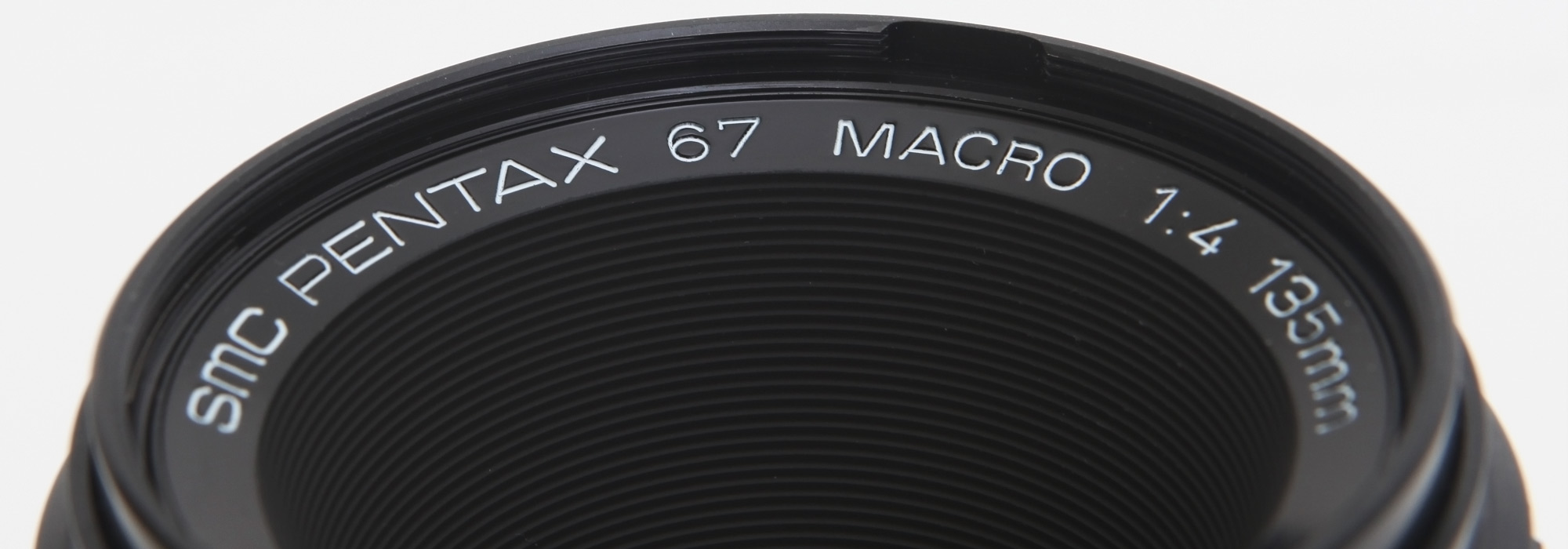

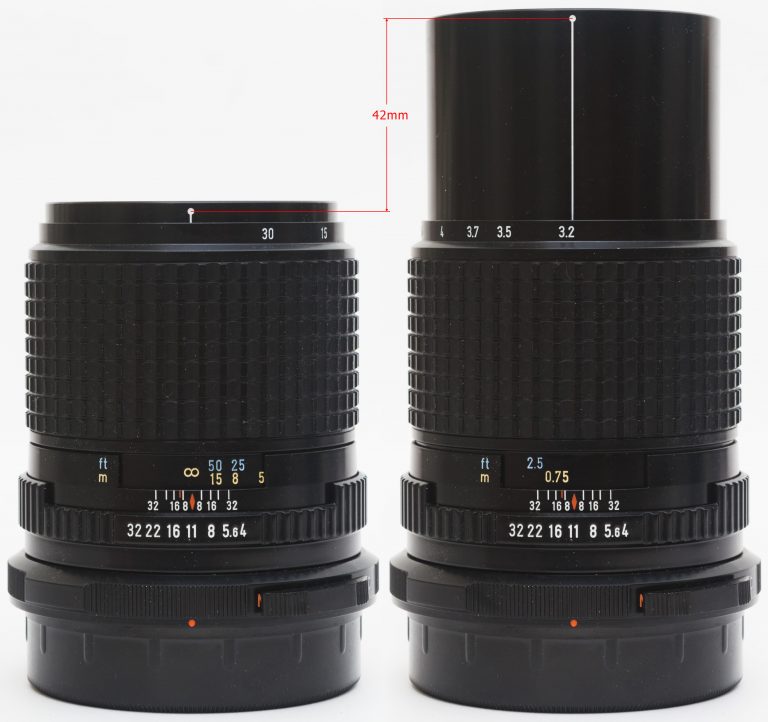












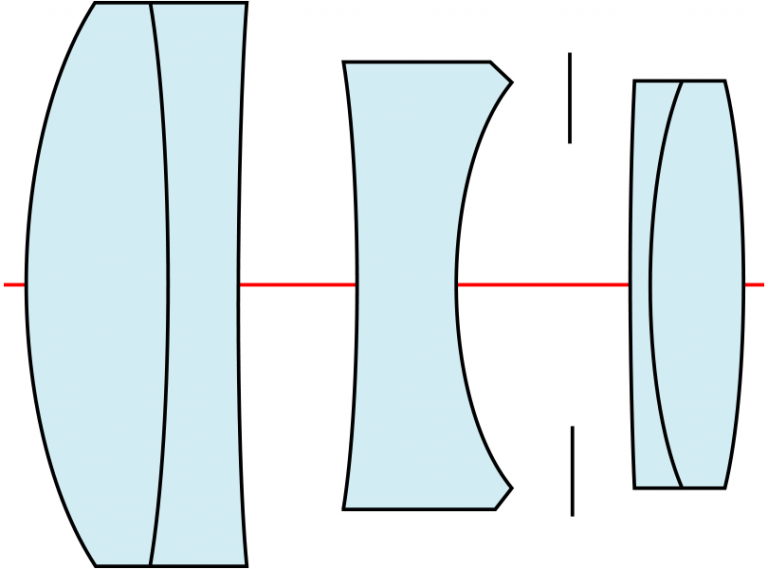

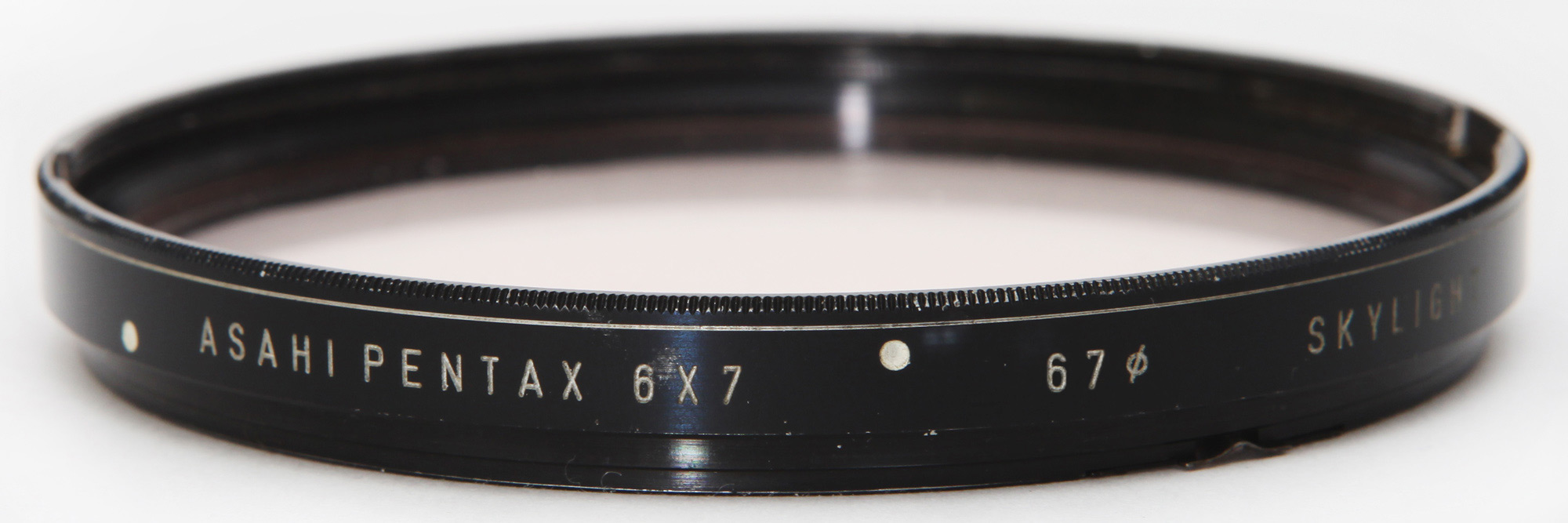
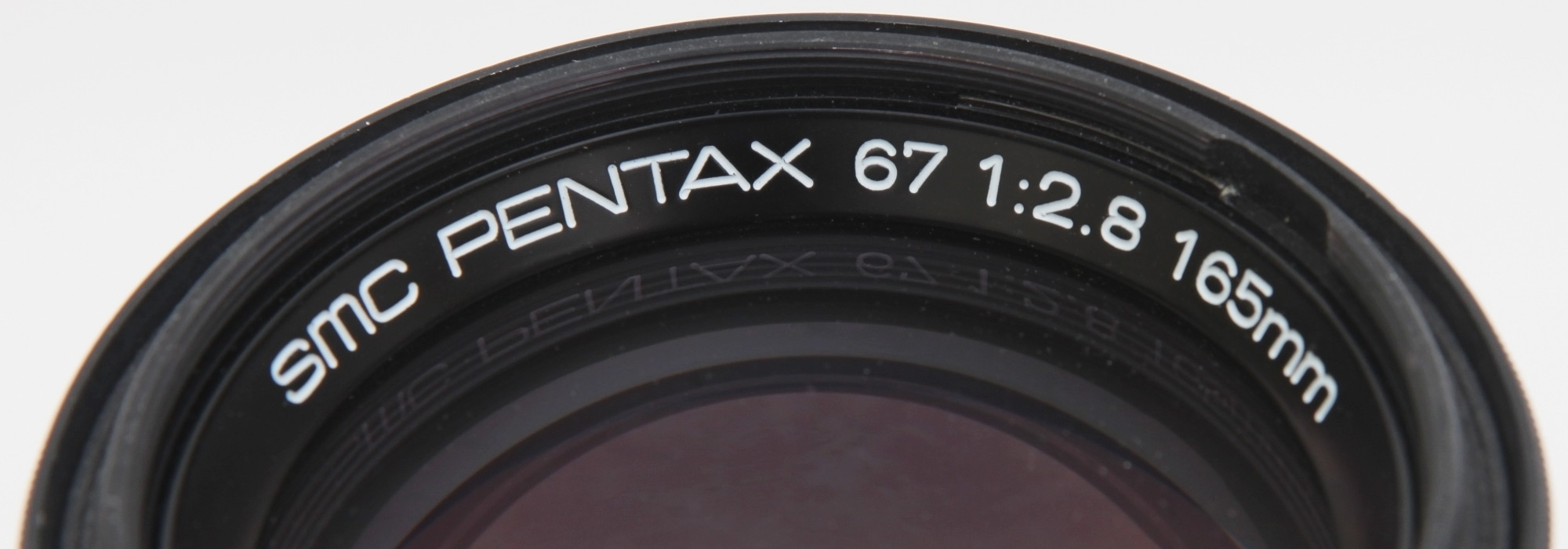
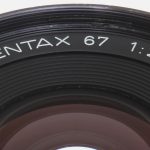

Roberto
Great lens with incredible sharpness even at non macro distances!
tobias
Are you still using the lens? I’m considering to add it to my 45 and 105 at the moment. The 105 at times feels a bit to short so I was looking for either the 135 or 165. The 135 is tempting as it lets me get closer, the 165 however I suppose feels more like a classical 85mm KB portrait lens. Both tempting – which one do you prefer to shoot?
Sasha Krasnov
Hello Tobias!
Yes, I still have and use 135mm instead of 165mm for these reasons:
a) weight;
b) close focusing;
c) focal length — I prefer “shorter” lenses for portraits because I like to be in touch with the model. As the lens “longer” the focusing distance is greater for the same magnification ratio;
d) the hood is better for 135mm.
As for me 165mm is too oversized for everyday usage. I’ve described the reasons in this article
As for standard lenses — I’ve both, 90mm F2.8 and 105mm F2.4. The first is very versatile lens. So, having 45mm it is better to keep 90mm instead 105mm. Also you have a gap about 17 degrees between 90mm and 135mm instead of 9.5 degrees between 105mm and 135mm focal lengthes. The more convenent configuration is: 45mm — 90mm — 135mm lenses.
You are right about the classic 85mm lens in 35mm format. But you should use the lens that fits your style of photography and shooting process rather than complying with the tenets I guess.
Ken Smith
Sasha,
Thanks for the info about your lenses. I sold my Pentax 6×7, but am acquiring 6×7 lenses to use in macro and telephotography of bees and birds. Your insight and technical info convinced me to take advantage of these great lenses and great deals to use with my Sony A7r2. I have already been using the Pentax 6×7 300mm f4 and 2x telextender to photograph Spotted Towhees in the birdbath as well as Quail and finches. I am even considering re-acquiring a 6×7 for a b&w portrait series. Cheers, Ken
Sasha Krasnov
Thank you for the message, Ken! Have a great portrait shots with P67!
Jan Gilewicz-Smolski
Dear Sasha,
First I want to thank you for the very complete information about everything pentax 67. It really helped me a lot choosing my set-up. But my question is if you know what the red and white markings on the barrel mean? Thanks in advance.
Kind Regards,
Jan
Sasha Krasnov
Thank you Jan! I’m really like to help you. White markings on the top of the lens mean magnification scale because it’s still a macro lens. So, if you focused on something and get the number 15 by this scale it means that the subject will be 1/15 = 0.667× of the original size. As you may note the maximum magnification is 1/3.2 = 0.313×. To get the life-size enlargement this lens requires whole set of extension tubes (#1+2+3).
Which red markings did you mean? I’ve used red colour to point attention to certain characteristics.
Renato
Ciao Sasha, ho qualche domanda da porti: differenze tra le lenti smc Takumar e smc Pentax; conosci la lente smc Takumar 75 f. 4.5?. Poi volevo congratularmi con te per il bel lavoro riguardo a Pentax 6×7, con collegamenti web molto interessanti. Ho usato il sistema 6×7 circa 20 anni fa, ora sono nostalgico
E vorrei riprendere in mano un sistema Pentax 6×7. Grazie mille dall’Italia
Sasha Krasnov
Hello Renato
Thank you for the comment. Typically, there is not much difference between “S-M-C Takumar” and “SMC Pentax” lenses of the same focal length. There are some oldest Super-Taukmars with older lens coating. All of them were manufactured in 1969-1971. There are some “S-M-C Takumar” and “SMC Pentax” lenses of the same focal length but optically different. For example, S-M-C Takumar 6X7 200mm F4 and SMP Pentax 67 200mm F4 are completely different lenses. Both 75mm F4.5 are the same lens with different finishing. I prefer the latest lens editions. They have a slightly better lens coating in my opinion. But there are two 55mm F4, “Pentax-6X7” and “Pentax 67” engraved. They are completely different two and have no Takumar predecessor. In another hand, Takumar 6X7 90mm F2.8 and Pentax 67 90mm F2.8 is not the same lens.
Brian
What is the difference in 6×7 lenses and 67 lenses other than year manufactured? Appreciate your articles
Sasha Krasnov
Usually, the difference is only in lens coating. Super-Takumars are single coated lenses, Super-Multi-Coated Takumar, SMC Pentax-6X7 and SMC Pentax 67 are multi-coated lenses. Also, on later lenses, multi-coating were slightly improved. Only for some lenses, the optical formula was changed. It is Pentax-6X7 55mm F4 and Pentax 67 55mm F4, Takumar 6X7 200mm F4 and Pentax 67 200mm F4. As for Takumar 6X7 90mm F2.8 with a leaf shutter, it was replaced by completely different Pentax 67 90mm F2.8 with no shutter inside. There is another lens may be found with different aperture unit — 67 300mm F4 which may have 7 or 9 blades inside.
MarianV
Well…wow, I am absolutely amazed and excited! It is absolutely wonderful, that someone like you exists, who use this legendary mid-format camera, who is apparently ready with spending time by creating these very (in modern ages) useful pages. I own one Pentax ASAHI 6×7 as well and your blog/this article helped me right now to buy 135/f4 Macro lens.
Well thank you and keep performing, you have absolutely wonderful photos.. respect!
Sasha Krasnov
Thank you, Marian! It is my pleasure to share the experience with people who love (and enjoy I hope) Asahi Pentax 6X7/67 system. The new articles will come soon.
Have great shots with your Pentax 67 135mm F4 Macro 😉 See ya…
Olya
Большое спасибо, Саша! Искала в гугле примеры фотографий для 150 mm f/2.8, в итоге нашла ваш блог и поняла, что если мне что-то и нужно дополнительно к 105 мм, то это 135 мм, а не 150-165. Очень информативно и полезно.
Sasha Krasnov
Ольга, не за что! Очень рад, что статья оказалась полезной!
Tomas
This article (and other on 165, 105 and 90) helped me to choose my portrait lens! 135 is also way cheaper than 105!
Sasha Krasnov
Thanks for reading! As for now, 135mm is my favorite lens for close portraits.
Tomas
I bought it from eBay without lens hood quite cheaply. How much is lens hood needed? Can you share your experience? I would buy it later eventually… What is the original lens for this hood by the way? I found that people use plastic PH-SA 67. Is it the same shape as the original?
Sasha Krasnov
PH-SA 67 is the original clip-on hood for 135mm F4 Macro and for 150mm F2.8. It is also possible to use this hood with 105mm F2.4 without darkening the corners and even with soft-focus 120mm F3.5 via 77->67 step-down adapter ring. Also, I recommend buying a cheap metal round hood for telephoto lenses which is a quite good choice for value. Pentax 67 135mm F4 Macro lens already has a deeply recessed front element and actually, it does need a hood only in certain lighting conditions, for instance when you place a light source just near the lens for macro work and others. Also, you can find on eBay the old Takumar 6X7 135mm F4 Macro metal hood. As far as I know, it is available both with screw-mount and bayonet-mount. The 135mm F4 Macro accepts any of them. I prefer PH-SA 67mm in a studio or home and the metal round hood for outdoor shooting because it has a more compact size.
Tomas
Thanks!
Tomas
I wonder whether your lens has some cloudiness. There is some in my lens, but very little, so I think it should not be a big issue. I guess that lenses with really clean optics are those more expensive, but you never know in advance, if you buy online.
Sasha Krasnov
The 135mm F4 Macro is one of the cheapest lenses in the system. Anyway, buying lens on eBay is a lottery. You need to watch for this cloudiness, will it grow or not.
Tomas
I will treat it by UV. I do not think it will grow. And I plan to open some lenses to clean either the front or the back element.
Sasha Krasnov
It’s a good idea!
Tomas
I would also like to know how much you stop it down because the scale looks pretty tight. Can I get a good portrait when fully-open? The middle format is a totally different animal, so I will need to get used to it.
Sasha Krasnov
All portraits in this post are made at wide open aperture. The 135mm F4 Macro is a very sharp lens. Also, I have to say that with wide-open 165mm F2.8 I got good portraits much rare than with 135mm F4 Macro
Tomas
Many thanks, Sasha!
Sasha Krasnov
You are welcome!
Phoenix Headshots
Anyone using on Sony bodies?
I tried the 120 645 Macro and it vignettes, so got the 135 67 today, and noticed it only goes to 3.2x, not 1x…
Sasha Krasnov
I had owned 645 120mm F4 Macro about 10 years ago. Are you talking about vignetting at a wide-open aperture? It’s a good true macro lens but without a “character” to my taste, unlike 67 135mm F4 Macro. But it is only a lens with close focus capability, not a macro lens. I used it both on Pentax 645 camera and Canon EOS 5D, but only just for testing. It’s quite strange I think to put a lens giving 55x70mm image size on the 24x36mm sensor. I may be wrong of course. Anyway, to get the 1:1 ratio you will need to get a full set of extension tubes.
Frank Gamiz
I have a big doubt I want to tilt lenses to get more mpx for portraits. I’m using a Sony A7RII and I’m considering to buy a this Pentax 67 135mm macro and use it with a tilt shift adapter to canon ef and sigma mc-11 adapter to E mount. Do you think that should be a good combo or should I go for an old canon ts-90mm?.
Both options costs more or less the same money but I’m not sure about sharpness and quality.
Thanks to all!
Sasha Krasnov
I think you would better go for Canon TS-90mm unless you already have Pentax 67 system. Anyway, it’s my own thoughts, but 1) Pentax 67 135mm F4 Macro is too long for portraits with 35mm cameras; 2) It’s too dark for 35mm lens while it’s Ok for medium format lens; 3) You will begin collecting 6X7 lenses because after some time you will buy more lenses. Trust me, you will. Only the one bonus — you will get all your Pentax 67 lenses tilt-shifted; 4) It’s better to collect Canon lenses if you have no further idea about using Pentax 67. You may directly use it on Canon EF/EF-S system in the future if you wish to buy a cheap one on the second-hand market to make it a backup camera.
Frank Gamiz
Thanks a lot for the answer, really appreciate your opinion. I usually buy my lenses depending on the planned project so I think that u are totally right and I should go for canon. Hope to get some of these lenses sometime!
(great reviews, by the way)
Sasha Krasnov
You are welcome! And thanks for reading the article 😉
Carl Zeller
I have both and the Canon 90mm is a far superior setup for product photography. I did just order a 55mm to try for some architectural shots.
Noel Quintela
Hi Sasha,
Thanks for all the great info you are sharing.
I’ve just got a 67 with 90, 135 & 200 lenses but still missing the one with the leaf shutter to shoot with flash over the 1/30 speed this ones allow.
Do you have any advice for this?
I’m also interested in getting closer than 1m in the portraits and there is a ring for this but not really sure which is the good one (I saw you mention in the top this: “old Takumar 6X7 135mm F4 Macro metal hood”)
Thanks for your help!
Sasha Krasnov
Hi Noel,
1) There are only two lenses with a leaf shutter available: Takumar 6X7 90mm F2.8 LS and late Pentax 67 165mm F4 LS. The first is considered to be not an excellent lens — it’s a bit softy being wide open. But I think when stopping it down by 1-2EV it should give good results like any other lens. But you should understand that it’s an old lens and the shutter may produce inaccurate speeds. It depends on usage and age. So, you’ll need to check it or ask a seller to check it. The other one is a modern lens and is considered a sharp lens. I guess you have to decide which focal length do you prefer and then choose the lens you prefer.
2) It depends on the lens you will use with macro rings. If you use the late Pentax 67 90mm F2.8 then it already allows focusing at 65cm. And the same is for Pentax 67 135mm F4 Macro. For these lenses, you actually don’t need an extension tube to make close-up portraits. Moreover, 90mm has a noticeable distortion and I would recommend preferring 135mm Macro. The late Pentax 67 200mm F4 also allows near close-up portraits. As for old Takumar 6X7 200mm F4 — you need extension tube #1 or #2. Ring #3 is typically used in macro work. If you want to buy extension tubes, but not as a set, I personally would recommend getting at least #1. It should be enough for most scenes.
Joao Ferreira
Pentax 67 ….
That is an idea: I have a 135mm Macro Super Takumar – that I used linked with an adaptor to Nikon F 35mm cameras…
Perhaps it will be the time to go to 6×7 via 67 Pentax ?
Be carefull with the Delta – the new covid19….
J. L. Ferreira.
Sasha Krasnov
Did you mean 6X7 135mm Macro? This a great lens!
StanislaVS
Александр, посмотрел ваши портреты с 135/4 макро и решил, что тоже нужно попробовать. Купил – объектив пока в пути. Ничего особенного от него не жду, так как макрик 120/4 для Р645 на цифре 645D для портретов мне однозначно не понравился. Но вдруг на плёнке P67 макрик раскроется… 🐸 Вообще если сравнивать старые плёночные 645 120/4 макро на цифре, например на сенсоре Pentax CCD или Fuji CMOS 33×44, то та же Sigma 105/1.4 на открытой (!) на портретных дистанциях показывает лучшие оптические свойства, чем эти макрики на F4. 0. Но Сигму 105/1.4 на P67 не поставишь, поэтому нужно пробовать… У вас хорошие фото с него получились, это и вдохновило.
Sasha Krasnov
Все же макрики 645 120mm F4 и 67 135mm F4 между собой не имеют ничего общего. Первый, а у меня он был достаточно продолжительное время, настоящий макрообъектив с плавающими элементами, все как положено. Портретов я им много наснимал, брутальные лица на белом фоне на диафрагме F11 получались круто. Второй, просто объектив с длинным геликоидом, и соответственно возможностью ближней фокусироки, по схеме Гелиар, как вы правильно заметили. Я это к тому, что к объективу 67 135mm F4 Macro не надо относиться как именно к макрообъективу. Было бы удобнее, если бы они (Асахи) вообще не делали его “макро”, т.е. без этого длинного и глубокого геликоида, который только габариты увеличивает, был бы намного компактнее. Но, имеем то, что имеем. Чтобы им настоящее макро снимать, туда еще колец добавить надо весь набор. Там темно в видоискателе становится так, что навести точно почти не реально.
Stanislavs
Да, забыл сказать, что по схеме он Heliar, т. е. развился из триплета. А триплеты за счёт двояковогнутого центрального элемента одни из самых объемно рисующих объективов. Как шёл процесс: 1) триплет, 2) склейка спереди – Primotar, 3) склейка сзади – Tessar’ 4) склейки спереди и сзади – Heliar. Если бы 135/4 вёл родословную не от триплета, а от того же даблл-гаусса (планара), даже не стал бы тратить деньги на его покупку, так как всё эти планары на одно лицо и невероятно скучные…
StanislaVS
Получил сегодня SMC 135/4 macro, с плёнкой ещё не успел испытать, но что уже можно сказать: этот объектив выдаёт очень четкие мурашки на микропризме. Для моего пенсионерского зрения это большой плюс. Ни на одном другом объективе 6х7 или 67 такого ярко выраженного эффекта не наблюдал. Одним словом фокусироваться с 135/4 – одно удовольствие!
Sasha Krasnov
И 90mm F2.8, и 105mm F2.4 дают очень яркий экран. В целом 135-й дает достаточно комфортную картинку в видоискателе для спокойной наводки на резкость. У меня зрение тоже сильно просело, стало актуально. Я сейчас экспериментирую с Meopar 135mm F4.5, он тоже Heliar, чехословацкий из 60-х. Весьма интересный объектив под формат 9×12, пришлось посадить его на отдельный геликоид правда. Но в видоискателе картинка уже и мягковатая, и темная для комфортной наводки на резкость по растру.
StanislaVS
Александр, у меня есть 105/2.4, объектив безусловно нравится. Но именно с ним на P67 я постоянно мажу по фокусу. С тем же 150/2.8 такого количества брака из-за непопаданий нет. Не знаю в чем дело. Пробовал снимать на 105/2.4 на 645D через родной адаптер, та же история. На БЗК по пикингу разумеется все четко. Даже не стал использовать 105/2.4 на P67, сколько же можно портить пленки? Из самоделок наверное этим летом закончу Baush@Lomb 152/1.8, по рабочему отрезку для P67 подходит, будет ли крыть кадр – пока не знаю. Скорее всего покроет ;-).
Sasha Krasnov
Учитывая, сколько она сейчас стоит, то да. Решать вам, тут от задач, удобства и т.п. Но, как ни странно именно со 150/2.8 у меня было больше нерезких кадров, хотя видоискатель очен светлый, и почти никогда со 105/2.4 и очень редко со 135/4. Просто видимо для моего стиля съемки и 150/2.8 и 165/2.8 слишком большие и неудобные для построения вертикального кадра. Максимально допустимый в этом смысле именно 135-й. И хотя у меня есть старый 200/4, который хоть и очень хороший, но весит почти 1 кг, это все равно скорее для тестирования все.
Brian Weight
Do you know what the numbers equate to around the lens barrel on the 135mm lens
Many thanks Brian Weight
Sasha Krasnov
This is a magnification scale.
Research Student
Hi Sasha,
I stumbled on your site and have read your articles, thank you for such attention to detail!
I am a portrait photographer and after many dreams got my hands on a rare and old 67 with a f/4 135mm during lockdown.
I have noted what you said about close portraits with a 135 and the capability of a 105 paying attention to your examples.
I am preparing to go for research and will be shooting in a variety of lighting conditions. Space (to get a bit further away) from my portrait subjects/scene to show more details of what is happening might be at a premium, but so is budget 🤣 . Will the 135 be okay or should I try to get my hands on a 105? 🫤
Thank you
Sasha Krasnov
Hi Gabriel,
Thank you for the question. I would recommend staying with a 135mm lens. Now the 105mm lens is the most popular, “must-have” lens. So, it is a bit overpriced, and thus you would better get films instead rather buying a new expensive lens. But you should know that the distance between you and the model will be some longer for the same magnification.
Thomas
Hi Sasha. I am new to the 67 system. I am currently shooting digitally with the gfx 50r system. I just got a Pentax 67 auto bellow system for macro photography. And my thoughs was to use it with the Pentax 67 135mm f/4 macro. I read on some forum that Pentax doesn’t recommend using the bellows with the 135 mm. For what reason I don’t know. Maybe you do?
If true?
And what lenses do you think I can use for macro photography. Of not the 135 mm. It’s only for studio use.
Thanks.
Sasha Krasnov
Hi Thomas,
I guess nobody recommended using this lens with Pentax 67 Auto Bellows for macro because it will be too dark in the viewfinder and impossible to focus I think. As a consequence, the exposure should be seriously increased. The longer lens you are using the more extension will need to reach a 1:1 magnification ratio. A more magnification ratio will require more bellows extension with 135mm. It’s a much better option is using a 105mm F2.4 lens with bellows. In this case, magnifications from 0.51X to 2.0X are available, and 0.73X to 3.02X when the lens is reversed mounted.
As for me, the 135mm lens is rather a portrait lens with close focusing capabilities than a macro one.
Jan
Hi! Lovely and detailed articles. I’m wondering if you had a preference or could even give a short comparison of the 135 vs the 165? Thanks! (The side by side of the 150 & 165 was perfect.)
Sasha Krasnov
Hi Jan!
This topic deserves its own article: “Choosing a Portrait Lens Beyond 105mm.”
I prefer the 67 135mm for several reasons. Its shorter focal length allows me to be closer to the subject without affecting the scale of the image, making communication easier during a shoot. Plus, I do not need a close-up ring #1 (or #2). The 67 135mm is lighter than the 67 165mm, and thus is more suitable for vertical portraits.
Comparing the 6X7 150mm and 67 165mm, I find little difference in terms of handling. However, the 6X7 150mm offers a more visually interesting bokeh. The 67 165mm’s bokeh, while technically precise, lacks the character I prefer. In terms of overall rendering, the 6X7 150mm is closer to the 67 105mm.